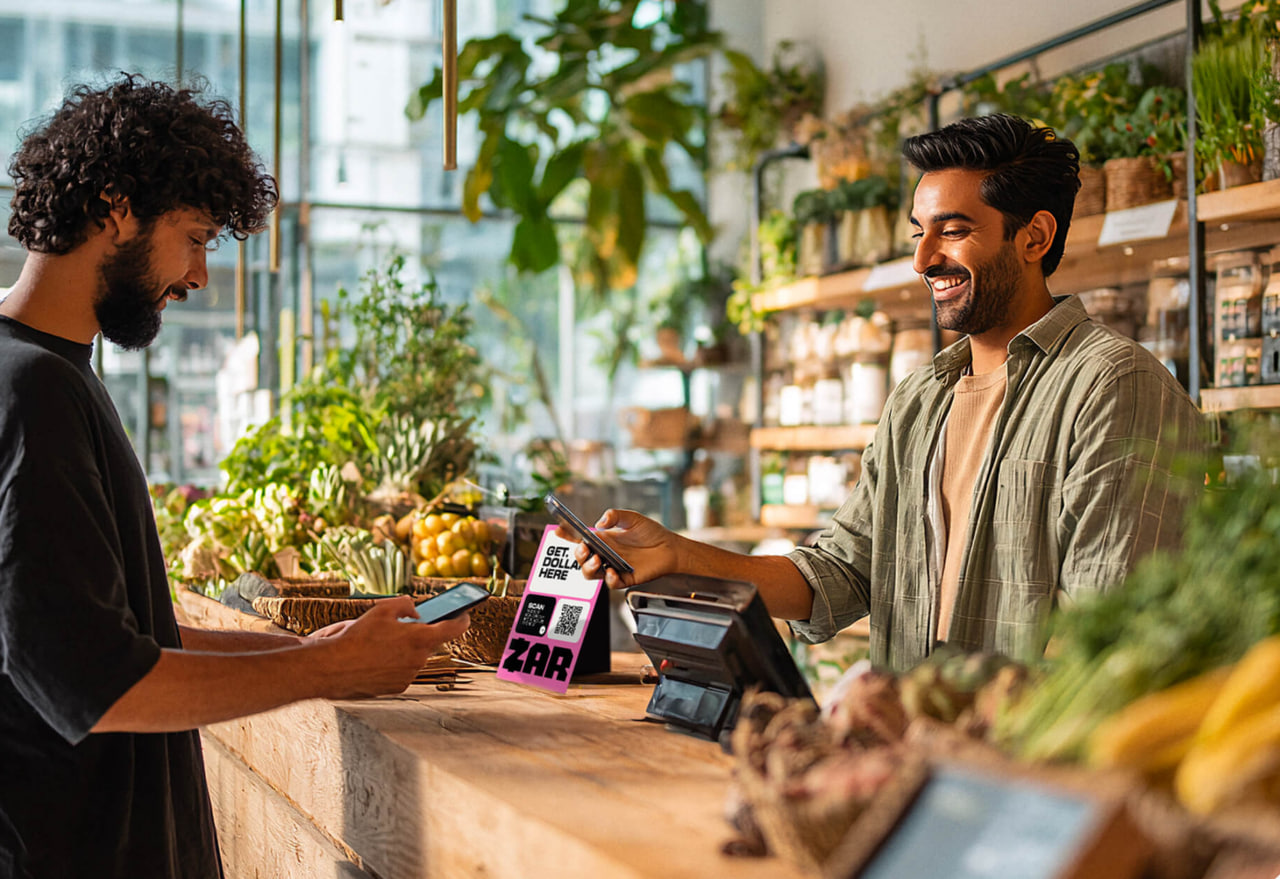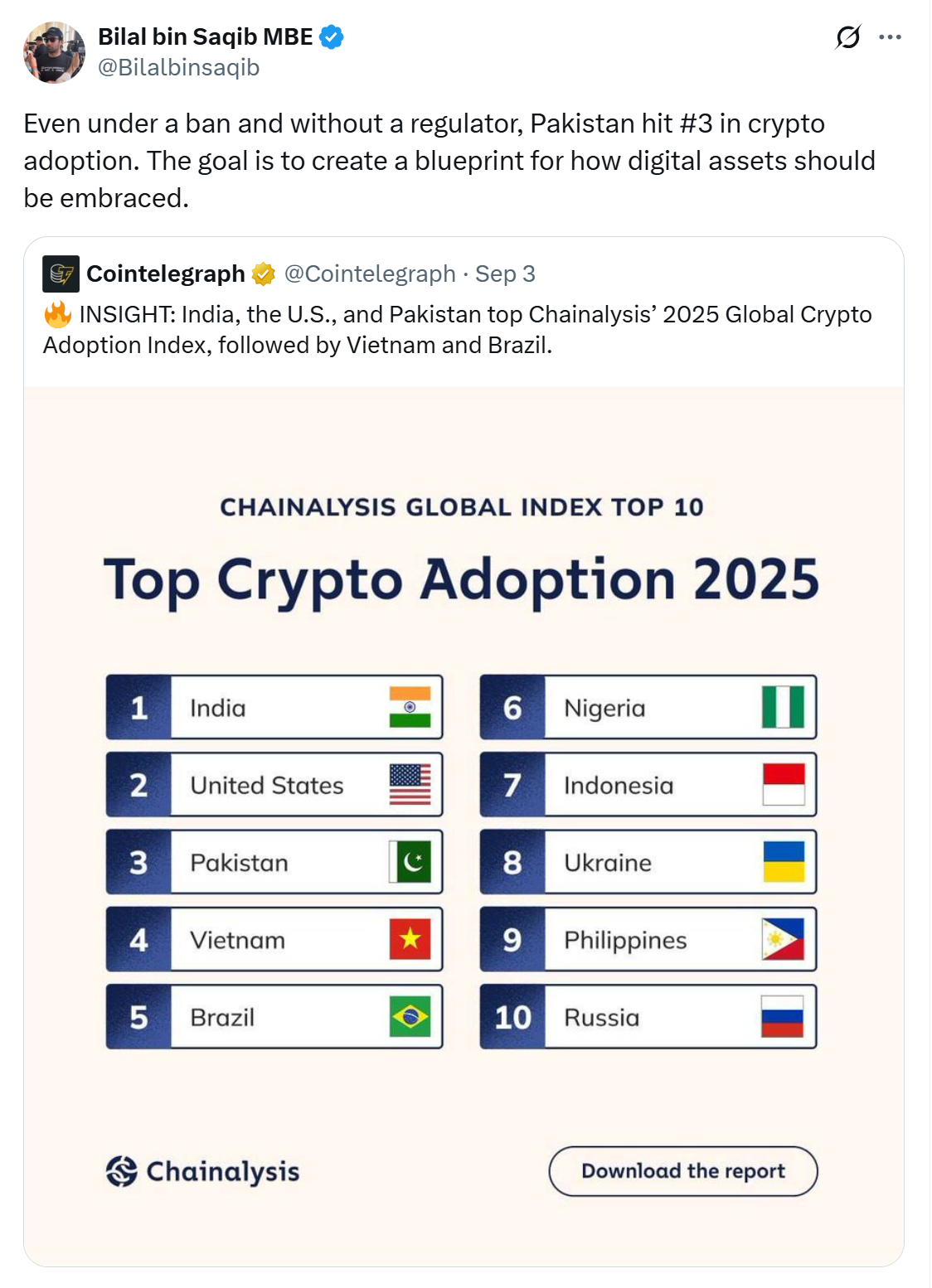ZAR, a fintech startup, is raising $12.9 million to distribute dollar-backed stablecoins through Pakistan’s corner stores and kiosks, targeting over 100 million unbanked adults. This approach simplifies access to digital dollars without needing blockchain knowledge, leveraging local networks for mobile wallets and Visa-linked cards.
-
Pakistan has over 100 million unbanked adults, per World Bank estimates, creating a prime opportunity for stablecoin adoption via everyday retail channels.
-
ZAR’s model uses existing infrastructure like phone kiosks for cash-to-stablecoin exchanges, bypassing traditional banking hurdles.
-
The startup has secured $20 million total funding, with plans for African expansion in 2026 if the Pakistan pilot succeeds.
Discover how ZAR stablecoins Pakistan unbanked population by turning corner stores into digital finance hubs. Explore funding details, adoption trends, and regulatory shifts driving crypto accessibility in emerging markets today.
What is ZAR’s Approach to Stablecoins in Pakistan?
ZAR stablecoins Pakistan initiative focuses on making dollar-backed digital currencies available to unbanked consumers through familiar local outlets like corner stores and phone kiosks. By integrating with mobile wallets and Visa cards, users can convert cash to stablecoins via simple QR code scans, enabling global spending without technical expertise. This strategy addresses Pakistan’s financial inclusion gap, where over 100 million adults lack banking access, according to World Bank data.
ZAR, founded just a year ago, differentiates itself from app-centric crypto firms by tapping into the widespread network already used for mobile top-ups and remittances. The company’s platform launched earlier this year and has gained traction in urban areas, allowing seamless cash swaps for stablecoins stored digitally. This method democratizes access to stable value in a volatile local economy, providing a hedge against inflation without requiring users to navigate complex blockchain technology.
The initiative aligns with broader trends in emerging markets, where stablecoins offer a bridge between cash economies and digital finance. ZAR’s co-founders, Sebastian Scholl and Brandon Timinsky, bring experience from their previous venture, SadaPay, which they sold to Turkey’s Papara in 2024. Their background in mobile payments informs ZAR’s user-friendly distribution model, emphasizing practicality over speculation.

ZAR allows users to turn cash into stablecoins via shops. Source: ZAR website
With total funding now at $20 million, ZAR plans to scale if the Pakistan pilot demonstrates viability. The approach not only empowers individuals but also supports local merchants by integrating them into the digital economy, potentially increasing transaction volumes through low-friction services.
How Does ZAR’s Funding Round Impact Stablecoin Adoption?
The recent $12.9 million funding round for ZAR, led by venture capital firm Andreessen Horowitz, includes investments from Dragonfly Capital, VanEck Ventures, Coinbase Ventures, and Endeavor Catalyst. This capital infusion, reported by Bloomberg on a recent Tuesday, underscores investor confidence in grassroots stablecoin distribution in high-potential markets like Pakistan.
Pakistan’s population of 240 million includes a significant unbanked segment, making it an ideal testing ground. World Bank estimates highlight that more than 100 million adults lack formal banking, often relying on informal networks for financial needs. ZAR’s strategy leverages these channels—corner stores, kiosks, and money agents—to onboard users, with early data showing strong uptake in cities.
Experts note that such models reduce barriers to entry. As one fintech analyst observed, “By embedding stablecoins in daily retail interactions, companies like ZAR can achieve scale faster than digital-only platforms.” This funding positions ZAR for operational expansion, including enhanced wallet security and merchant training programs. The round brings total investment to $20 million, signaling robust backing for sustainable growth.
Regulatory developments further bolster this momentum. Pakistan established the Pakistan Virtual Assets Regulatory Authority (PVARA) earlier this year to oversee digital assets. Last month, the government invited international crypto firms to apply for licenses under a new federal framework, fostering a structured environment for innovation.
How Has Pakistan’s Crypto Landscape Evolved for Stablecoins?
Pakistan’s rise in global crypto adoption has accelerated stablecoin opportunities, with the country ranking third in Chainalysis’ 2025 Global Crypto Adoption Index—a jump of six positions. This surge reflects increasing grassroots engagement, driven by economic pressures and remittances, where stablecoins provide reliable value storage and transfer options.
The nation’s 240 million residents face currency volatility, making dollar-pegged stablecoins attractive for everyday use. ZAR’s initiative capitalizes on this by distributing through trusted local points, similar to how mobile money has proliferated in Africa. Early traction in urban centers demonstrates feasibility, with users appreciating the simplicity of QR-based transactions linked to Visa cards for worldwide usability.
Broader adoption metrics show retail crypto transactions doubling amid regulatory clarity, as noted by TRM Labs. Pakistan’s proactive stance, including PVARA’s formation, aims to balance innovation with consumer protection. This environment encourages startups like ZAR to innovate responsibly, focusing on inclusion rather than high-risk trading.

Pakistan ranks third in global crypto adoption. Source: Bilal Bin Saqib
Looking ahead, successful pilots could extend ZAR’s model to African markets in 2026, adapting to similar unbanked challenges. Industry observers emphasize that regulatory support is key: “Clear guidelines enable legitimate players to thrive, reducing fraud risks in emerging ecosystems,” according to a blockchain policy expert.
This evolution positions Pakistan as a leader in practical crypto applications, where stablecoins address real-world needs like affordable remittances and savings. ZAR’s focus on accessibility aligns with global trends, proving that localized strategies can drive widespread adoption.
Frequently Asked Questions
What Makes ZAR’s Stablecoin Model Unique for Pakistan’s Unbanked?
ZAR’s model stands out by using corner stores and kiosks for cash-to-stablecoin conversions, reaching over 100 million unbanked adults without apps or tech knowledge. Users scan QR codes to load mobile wallets with dollar-backed assets, linked to Visa cards for global use, simplifying financial inclusion in Pakistan.
How Will Pakistan’s New Regulations Affect Stablecoin Access?
Pakistan’s Virtual Assets Regulatory Authority, launched earlier this year, oversees digital assets to ensure safety and compliance. Recent invitations for international firms to license under federal rules will likely expand stablecoin options, making services like ZAR’s more secure and accessible for everyday consumers seeking stable value.
Key Takeaways
- ZAR’s Funding Milestone: The $12.9 million round led by Andreessen Horowitz boosts efforts to integrate stablecoins into Pakistan’s retail networks, targeting unbanked populations effectively.
- Adoption Surge in Pakistan: Ranking third globally per Chainalysis, the market’s growth highlights demand for user-friendly crypto solutions amid economic challenges.
- Regulatory Progress: PVARA and new licensing frameworks create a supportive environment, encouraging innovation while protecting users from risks.
Conclusion
ZAR’s stablecoins Pakistan push, backed by $20 million in funding, revolutionizes access for the unbanked through local shops and kiosks, leveraging the country’s third-place crypto adoption ranking. As regulations like PVARA mature, this model paves the way for broader financial inclusion in emerging markets. Stay informed on these developments to explore how digital dollars can transform personal finance—consider the potential for your own region’s unbanked communities.
